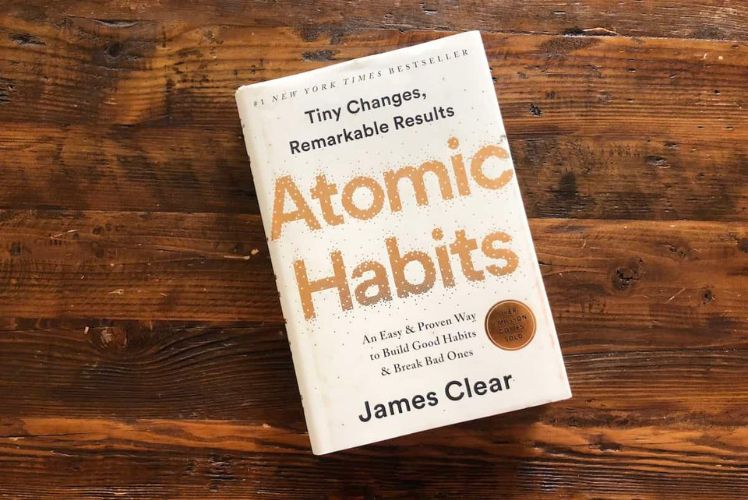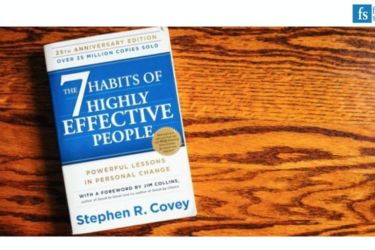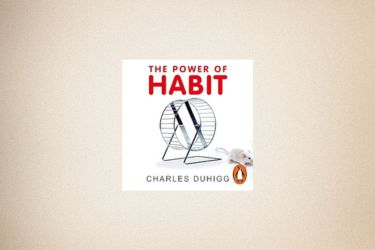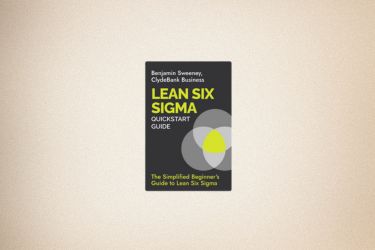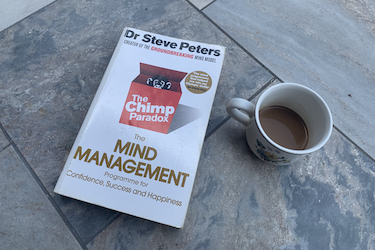Atomic Habits by James Clear has become one of the most influential self-help books since its publication in 2018, and for good reason. The book tackles a problem we all face: how to build good habits that stick and break the bad ones that hold us back. Clear's approach isn't about dramatic life overhauls or extreme changes.
The book's central premise is that tiny, consistent changes compound over time to create remarkable results. Clear calls these small changes "atomic habits" because they're the fundamental units that build bigger outcomes. Rather than focusing on goals alone, he shows us how to design systems that make good habits inevitable and bad habits difficult.
What sets Atomic Habits apart from other habit books is its practical, science-based approach. Clear provides a clear framework called the Four Laws of Behaviour Change, along with specific strategies like habit stacking and the two-minute rule. We'll explore how these concepts work in practice and whether this bestseller lives up to its reputation for transforming lives through small, manageable changes.
Key Takeaways
- Small daily habits compound over time to create significant long-term results and personal transformation
- The Four Laws of Behaviour Change provide a practical framework for building good habits and breaking bad ones
- Simple techniques like habit stacking and the two-minute rule make it easier to start new habits and maintain consistency
Core Concepts of Atomic Habits
James Clear builds his entire system around small daily changes that create massive results over time. He emphasises identity transformation over goal achievement and shows us why systems beat goals every single time.
Defining Atomic Habits
Atomic habits are tiny changes that form the building blocks of remarkable results. James Clear uses the word "atomic" to mean both small and fundamental - like atoms that make up larger molecules.
These habits are so small they seem insignificant at first. Reading one page daily counts as an atomic habit. So does doing one push-up or writing one sentence.
The key insight is that atomic habits are the smallest unit of positive change. They're easy to start because they require minimal effort. Yet they're powerful because they compound over time.
Clear explains that atomic habits work through four simple steps:
- Cue: The trigger that starts the habit
- Craving: The desire to change something
- Response: The actual habit you perform
- Reward: The benefit you gain
This cycle repeats automatically once established. The habit becomes effortless through repetition.
The Power of Small Changes
Small changes create extraordinary outcomes through compound growth. If we improve by just 1% each day, we'll be 37 times better after one year.
This mathematical reality challenges our desire for quick fixes. We often expect immediate results from our efforts. But atomic habits work differently - they accumulate slowly then surprise us with dramatic improvements.
Clear shows us why small changes often go unnoticed initially. He calls this the "valley of disappointment" - the period where we put in work but see no obvious progress.
The breakthrough comes when small improvements finally cross a critical threshold. Like ice melting at 32 degrees, the change appears sudden but results from gradual warming.
Key benefits of small changes:
- They're sustainable long-term
- They build confidence through small wins
- They create momentum for bigger changes
- They feel manageable rather than overwhelming
Identity-Based Habits
Traditional habit advice focuses on what we want to achieve. James Clear flips this approach by focusing on who we want to become.
Identity-based habits start with desired identity rather than desired outcomes. Instead of "I want to run a marathon," we think "I am a runner." The habit flows naturally from this identity.
This approach works because our actions reflect our self-image. We act consistently with how we see ourselves. Change the identity, and behaviours follow automatically.
Clear explains that every action is a vote for the type of person we want to become. Each time we write, we vote for being a writer. Each workout votes for being an athlete.
The process works in both directions. Small habits reinforce our desired identity. A stronger identity makes maintaining habits easier.
Goals Versus Systems
Goals define what we want to accomplish. Systems are the processes that lead to those results. Clear argues that we should focus on systems rather than goals.
Problems with goals:
- Winners and losers often have the same goals
- Achieving goals provides only temporary satisfaction
- Goals restrict happiness until achievement
- Goals don't create lasting change
Systems solve these problems by focusing on the process itself. A system for writing might involve writing 500 words daily. The system continues regardless of individual outcomes.
James Clear suggests that goals are useful for setting direction. But systems are essential for making progress. We don't rise to our goals - we fall to our systems' level.
The best approach combines both elements. Set goals to clarify what matters most. Then build systems that make progress inevitable through daily action.
The Four Laws of Behaviour Change
James Clear's four laws provide a simple framework for building good habits and breaking bad ones. Each law targets a different stage of the habit loop, making behaviour change more predictable and achievable.
Make It Obvious
The first law focuses on cue visibility. We often perform habits without conscious awareness, so making triggers more obvious helps us notice opportunities for positive behaviour.
Environment design plays a crucial role here. Clear suggests placing visual cues in our surroundings that prompt desired actions. For example, leaving a book on your pillow reminds you to read before bed.
The habit stacking technique links new habits to existing ones. We attach a new behaviour to something we already do consistently. "After I pour my morning coffee, I will write in my journal for five minutes."
Implementation intentions also support this law. We specify when and where we'll perform a habit: "I will exercise at 7 AM in my living room." This clarity removes guesswork and strengthens our commitment to action.
Make It Attractive
The second law leverages our brain's reward system. We're more likely to repeat behaviours that feel appealing and enjoyable.
Temptation bundling combines something we need to do with something we want to do. We might only watch our favourite TV show whilst exercising on the treadmill.
Social influence makes habits more attractive. We naturally copy behaviours of people we admire or want to belong with. Joining groups where our desired behaviour is normal helps reinforce positive changes.
Clear emphasises reframing our mindset about difficult habits. Instead of "I have to exercise," we think "I get to build strength." This shift makes challenging behaviours feel more appealing.
Highlighting benefits rather than focusing on what we're giving up also increases attractiveness. We remind ourselves why the habit matters to us personally.
Make It Easy
The third law reduces friction between us and good habits. We're more likely to follow through when behaviours require minimal effort and decision-making.
Starting small prevents overwhelm. Clear recommends the two-minute rule: scale habits down until they take less than two minutes to complete. Reading one page is easier than finishing an entire chapter.
Environmental preparation removes obstacles before they appear. We lay out gym clothes the night before or prep healthy snacks on weekends.
Habit shaping gradually increases difficulty over time. We begin with the easiest version of our desired behaviour, then slowly add complexity as the routine becomes automatic.
The concept of activation energy matters here. We reduce the steps needed to perform good habits whilst increasing barriers to bad ones.
Make It Satisfying
The fourth law provides immediate rewards for positive behaviour. Our brains prioritise instant gratification, so we need quick feedback to reinforce habits.
Immediate rewards bridge the gap between action and long-term benefits. We might treat ourselves to a favourite tea after completing a workout, even though fitness results take months to appear.
Habit tracking provides visual satisfaction. Marking an X on a calendar after each completed habit gives us a small sense of accomplishment and shows our progress clearly.
Never miss twice helps us recover from inevitable slip-ups. Perfect consistency isn't required, but we focus on getting back on track quickly rather than abandoning our efforts entirely.
Accountability partners add social satisfaction to habit completion. Sharing our progress with others creates additional motivation and celebration opportunities when we succeed.
Habit Stacking and Daily Routines
Habit stacking connects new behaviours to existing routines, whilst environmental design shapes how easily we perform these actions. These strategies work together to create sustainable daily patterns that require less willpower to maintain.
Implementing Habit Stacking
We can build lasting habits by linking new behaviours to actions we already do consistently. This method works because existing routines act as natural triggers for new habits.
The formula is simple: "After I [existing habit], I will [new habit]." For example, "After I brush my teeth, I will write down three priorities for the day."
Common stacking opportunities include:
- Morning routines (after coffee, before leaving home)
- Meal times (before eating, after dishes)
- Evening wind-down (after changing clothes, before bed)
We should choose existing habits that happen at the same time daily. The stronger the existing routine, the better it works as an anchor for new behaviours.
Start with habits that take less than two minutes. This reduces resistance and builds momentum quickly. Once the connection becomes automatic, we can expand the new habit.
The Role of Daily Routines
Daily routines provide structure that makes habit formation easier. They create predictable moments when we can insert new behaviours without relying on motivation.
Morning routines are particularly powerful because we start each day with high willpower. We can stack multiple habits together during this time when our mental energy is strongest.
Effective routine building involves:
- Consistency: Same time, same order
- Simplicity: Clear, specific actions
- Flexibility: Room for adjustments without breaking the chain
We should design routines around our natural energy patterns. Some people work better with elaborate morning sequences, whilst others prefer minimal routines with evening habit stacks.
The key is creating sequences that feel natural rather than forced. Routines should reduce decision-making, not create more stress.
Environmental Design
Our surroundings influence habit success more than willpower alone. We can shape our environment to make good habits obvious and bad habits invisible.
Design for success by:
- Placing visual cues in obvious locations
- Removing barriers to desired behaviours
- Creating friction for unwanted habits
- Organising spaces to support routine flows
For habit stacking, we might place our journal next to our toothbrush or keep workout clothes beside the bed. These visual reminders trigger the habit chain without mental effort.
We should also consider the physical flow of our spaces. If our morning routine moves from bedroom to bathroom to kitchen, we can place habit cues along this natural path.
Small environmental changes often produce bigger results than trying to change behaviour through willpower alone.
Motivation, Progress, and the Two-Minute Rule
Clear shows us that lasting motivation comes from making habits satisfying and tracking our progress consistently. The two-minute rule helps us start any habit by making it so small that we cannot fail.
Understanding Motivation
We often think motivation must come before action. Clear teaches us the opposite is true. Action creates motivation, not the other way around.
The key is making habits immediately satisfying. When we feel good after doing something, we want to repeat it. This is how our brains are wired.
Clear suggests adding instant rewards to habits that don't feel good straight away. For example, after exercising, we might watch our favourite show. After saving money, we could move that amount to a special account we can see growing.
The habit loop works like this:
- Cue triggers the habit
- We do the routine
- We get a reward that makes us want to repeat it
The reward must happen right after the action. Delayed rewards don't help build habits because our brains need immediate satisfaction to create the connection.
Tracking Progress and Rewards
Habit tracking itself becomes a reward. When we mark off each day we complete a habit, it feels satisfying. This simple act makes the habit more likely to stick.
Clear recommends keeping tracking simple. A basic calendar with X marks works better than complex apps. The visual proof of our progress motivates us to continue.
Effective tracking methods include:
- Paper calendar with checkmarks
- Simple phone apps
- Moving paperclips from one jar to another
- Marking days on a wall calendar
Never miss twice is Clear's key rule. Everyone misses a day sometimes. The important thing is getting back on track immediately. Missing once is a mistake. Missing twice starts a new bad habit.
We should celebrate small wins along the way. Each completed day deserves recognition, even if it's just a mental "well done" to ourselves.
Applying the Two-Minute Rule
Any new habit should take two minutes or less when starting. This makes beginning so easy that we have no excuse to skip it.
The rule works because starting is often the hardest part. Once we begin, we usually continue longer than planned. But even if we stop after two minutes, we've still reinforced the habit.
Examples of two-minute habits:
- "Read before bed" becomes "read one page"
- "Exercise daily" becomes "put on running shoes"
- "Eat healthier" becomes "eat one piece of fruit"
- "Write a book" becomes "write one sentence"
The goal isn't to do the habit for only two minutes forever. It's to make starting automatic. Once the habit feels natural, we can slowly increase the time.
We must resist the urge to do more too quickly. Even if we feel motivated to exercise for an hour, we should stick to our two-minute commitment for the first few weeks. This builds the identity of someone who exercises daily.
Long-Term Behaviour Change and Practical Applications
Clear's framework shows us that lasting change happens through consistent small actions rather than dramatic shifts. The key lies in building systems that support habit maintenance whilst adapting to challenges that naturally arise over time.
Sustaining Positive Habits
We often struggle to maintain habits beyond the initial excitement phase. Clear emphasises that habit stacking creates powerful connections between established routines and new behaviours.
This means linking our desired habit to something we already do consistently. For example, "After I pour my morning coffee, I will write three grateful thoughts."
Environmental design plays a crucial role in sustainability. We can make good habits obvious by placing visual cues in our surroundings. Keep books visible if we want to read more. Place workout clothes beside our bed for morning exercise.
The concept of identity-based habits proves most effective for long-term success. Instead of focusing on outcomes, we ask ourselves: "What would a healthy person do?" This shift helps us act consistently with our desired identity.
Clear suggests tracking habits through simple methods like marking calendars or using habit tracking apps. This creates accountability and shows our progress over time.
Overcoming Plateaus
Plateaus happen when our habits become automatic but stop producing noticeable improvements. Clear calls this the "arrival fallacy" - thinking we can stop once we reach a goal.
Progressive overload keeps habits challenging. We gradually increase difficulty or complexity to maintain growth. A reader might progress from 10 pages daily to 15 pages after several weeks.
The two-minute rule helps us restart when motivation drops. We scale habits down to their simplest form - "read one page" instead of "read for 30 minutes."
Atomic habits work through marginal gains. Small improvements compound over time, even when progress feels slow. Clear uses the British cycling team example, showing how 1% improvements in multiple areas created world-class performance.
We must expect plateaus as natural parts of the process. They often signal that we're ready for the next level of challenge.
Applying Atomic Habits in Different Contexts
Personal health benefits greatly from atomic habits principles. We can start with two-minute workouts, gradually building to longer sessions. Meal preparation becomes easier when we prep vegetables immediately after grocery shopping.
Professional development improves through small daily practices. Writing 100 words daily builds writing skills. Learning one new vocabulary word each morning develops language abilities.
Financial habits compound effectively over time. Saving £5 weekly seems small but creates meaningful emergency funds. Tracking daily expenses reveals spending patterns without requiring complex budgeting systems.
Relationship building strengthens through consistent small gestures. Sending one appreciation text daily or asking thoughtful questions during conversations builds deeper connections.
Clear's four laws of behaviour change apply universally:
| Law | Application | Example |
|---|---|---|
| Make it obvious | Visual cues | Place floss beside toothbrush |
| Make it attractive | Bundle with enjoyable activities | Listen to podcasts whilst cleaning |
| Make it easy | Reduce friction | Lay out gym clothes the night before |
| Make it satisfying | Track progress | Mark calendar after completing habit |
These principles work across different life areas because they address fundamental aspects of human behaviour change rather than specific activities.
Frequently Asked Questions
Many readers want to know about the book's practical value and how it stands against other habit-formation guides. People also ask about the author's background and whether the book delivers real results.
What are the main takeaways from James Clear's 'Atomic Habits'?
The book teaches readers to focus on small, daily changes rather than big goals. Clear explains that tiny habits compound over time to create significant results.
His main idea centres on the 1% improvement rule. Making small improvements each day leads to massive gains over a full year.
Clear presents four laws of behaviour change. These include making habits obvious, attractive, easy, and satisfying.
The book emphasises building systems instead of setting goals. Systems create lasting change whilst goals only provide temporary motivation.
How does 'Atomic Habits' compare to other self-help books in the genre?
'Atomic Habits' stands out because it provides specific, actionable strategies rather than vague inspiration. Many self-help books focus on motivation, but Clear focuses on practical systems.
The book uses scientific research to back up its claims. Clear combines psychology studies with real-world examples to explain how habits work.
Unlike books that promise quick fixes, 'Atomic Habits' teaches sustainable long-term change. The approach requires patience but delivers lasting results.
The writing style is clear and easy to understand. Clear avoids complex jargon that makes other habit books difficult to follow.
Can 'Atomic Habits' provide actionable steps for habit formation and change?
Yes, the book offers concrete techniques readers can use immediately. Clear provides step-by-step methods for building good habits and breaking bad ones.
The habit stacking method helps people attach new habits to existing routines. This makes it easier to remember and maintain new behaviours.
Clear explains how to design your environment to support good habits. He shows readers how to remove barriers that make bad habits easier to follow.
The book includes templates and worksheets. These tools help readers apply the concepts to their specific situations.
What are some success stories or endorsements related to 'Atomic Habits'?
Many readers report successfully building exercise routines, reading habits, and productivity systems using Clear's methods. The book has helped people make lasting changes in various life areas.
Business leaders and athletes have praised the book's practical approach. They use Clear's strategies to improve team performance and personal habits.
The book became a bestseller and received positive reviews from major publications. It has sold millions of copies worldwide since publication.
Online communities share success stories about using atomic habits principles. People report improvements in health, work, and personal relationships.
What is James Clear's background and how has it influenced the insights in 'Atomic Habits'?
Clear started as a blogger writing about habits and performance improvement. He built a large following by sharing practical advice based on research and personal experience.
His background includes studying at Denison University, where he played baseball. A serious injury during his school years taught him about the power of small, consistent improvements.
Clear spent years researching habit formation and behaviour change. He studied psychology research and interviewed successful people to understand what works.
His experience as a photographer and entrepreneur gave him real-world knowledge about building consistent practices. This practical background shapes the book's actionable advice.
Are there any critical reviews of 'Atomic Habits' and what do they say?
Some critics argue the book doesn't offer enough new ideas compared to existing habit research. They suggest Clear repackages familiar concepts without adding significant innovation.
Others find the book repetitive and longer than necessary. These reviewers believe the main ideas could be explained in fewer pages.
A few critics question whether the approach works for everyone. They argue that some people need different strategies based on their personality or circumstances.
Despite criticism, most reviews acknowledge the book's practical value. Even critical reviewers often admit the strategies can be helpful for many readers.

